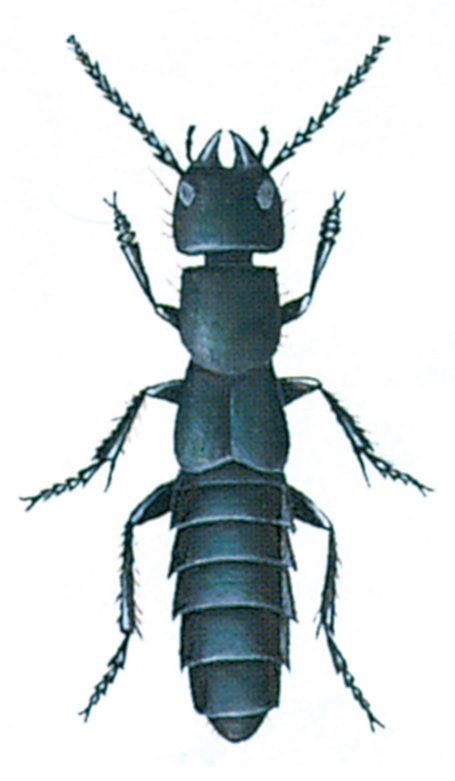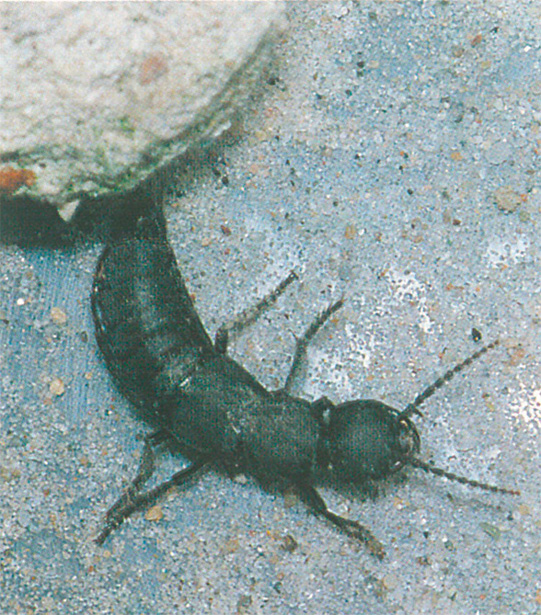(Latin: Staphylinus olens)

This large predatory beetle is common in woodland, but is also found in gardens and sometimes enters houses when hunting for prey, usually small insects, slugs and worms.
It is easily recognizable by its size (up to 3 cm long) and by its dark colour. As is typical of the staphylinid beetles the elytra are very short, and in fact they only cover the foremost part of the segmented abdomen, while the remainder is therefore free and very mobile – somewhat resembling the abdomen of an earwig.

When threatened this beetle assumes a posture with the abdomen bent upwards, rather like a scorpion. This is, however, an empty threat for the beetle can neither sting nor bite with its abdomen. What then is the function of this behaviour pattern? It is, indeed, a fact that some people are frightened by it, and it is quite likely that the beetle’s natural enemies, insectivorous birds and mammals, are also scared by it.
When seized a staphylinid will naturally try to bite with its powerful mandibles, but they are not powerful enough to pierce skin, so from the human viewpoint this is a completely harmless insect.




